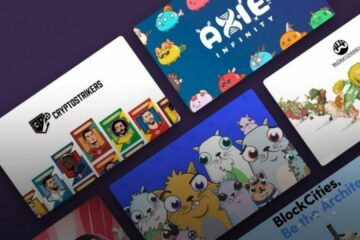Spending $ 500,000 on a digital piece of art that you can’t even hang? In the world of “NFTs” this has become part of everyday life. Some see blockchain art as the future of the art market – others just a hoax.
The animation became world famous as “Nyan Cat”. The cat, which flies through space with a rainbow tail, was first uploaded to the next ten years ago by the American illustrator Christopher Torres. As usual for an internet meme, it was quickly copied and redistributed – making it impossible for its inventor to make any money. That changed in February 2021: An authentic version of the animation was sold as a work of art online: for half a million dollars.
What are NFTs and how could they change the art world?
That paintings are sold for millions in the art world is nothing new. So far, however, physical objects have been acquired in the process. That is changing now. On platforms like OpenSea and SuperRare, digital works of art of all kinds are sold for money – some only cost a few cents, others millions of dollars. Prominent names are also taking part: Most recently, the pop singer Grimes auctioned several works for a total price of 6 million dollars.
What is special about all of this is that the works of art remain freely available on the Internet even after they have been sold, and even a seven-digit price does not mean that a physical object actually changes hands. The purchase takes place purely digitally – as an “NFT”.
What are NFTs?
NFT stands for “Non Fungible Token” – online goods that cannot be replaced or destroyed. To do this, they use a blockchain – the same technology on which crypto currencies such as Bitcoin are based. The special thing about blockchains: unlike usual on the Internet, data is not stored in a central location, but on numerous computers at the same time. This makes data on the blockchain particularly forgery-proof, but also very energy-consuming.
To sell a digital work of art as an NFT, ownership of the work of art is written on one of the numerous blockchains: Ethereum, for example, is popular for this. This means that the whole world can see who has bought the NFT: The ownership claim is stored in a traceable manner on the entire blockchain.
Why would you buy an NFT?
Just like in the classic art market, the prices for NFTs are not linked to real values in the real world. A work of art is worth what people are willing to pay for it. And now it is no longer even necessary to hang up the picture so that visitors can see it – after all, this is not possible with an animated cat. A purely digital title deed is enough for the digital art collector.
This means that theoretically everything can be traded digitally as a work of art: pictures and pieces of music, but also virtual items of clothing and even tweets.
What could the future look like for NFTs?
Some artists see NFTs as a potential new source of income. Musicians like Deadmau5 and Lil Yachty have also already sold NFTs from their works. Fans use the opportunity here to support their favorites in an uncomplicated way. However: So far, the main focus here has been on big names. A largely unknown artist would find it very difficult to get a good price for her work in the flooded NFT market.
Elsewhere there is hope that the concept could also be used in areas other than the art market: for example, to buy an upgrade in a video game or to receive a trophy.
Why are NFTs criticized?
After years of big announcements and little results, however, the usefulness of blockchain projects remains controversial – and NFTs are no exception. For example, it is criticized that copyright infringements can easily occur on digital marketplaces – the blockchain itself cannot know whether the seller actually has the rights to the object being sold.
In addition, ownership of the digital art is limited to the blockchain on which the purchase took place. The Nyan Cat buyer made the purchase on the Ethereum blockchain, and only there is the purchase noted. Since new blockchains are constantly emerging that support NFTs, Nyan Cat could theoretically be sold to other people on all of these blockchains.
The energy consumption of the blockchain also remains a controversial topic. Because they run on numerous computers at the same time, blockchain projects need a lot of electricity. According to a study, the best-known crypto currency Bitcoin alone consumes more energy than the entire country of Argentina. As long as a large part of the world’s electricity is generated from fossil fuels such as coal and gas, this also creates a considerable burden on the climate.



0 Comments